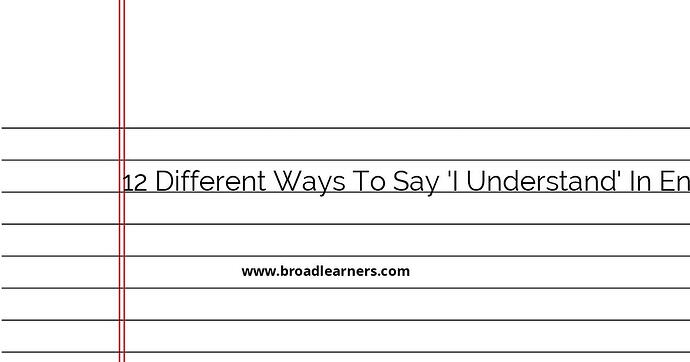Being able to express understanding is an important skill in any language, including English.
While 'I understand' is a commonly used phrase, using different alternatives can help you vary your language and communicate more effectively.
Here are 12 different ways to express 'I understand':
- I get it. This is a casual way to say 'I understand' in everyday conversations. It shows that you have comprehended the message or information.
- I see what you mean. This phrase indicates that you understand the point or perspective being presented. It implies that you have grasped the concept and are acknowledging it.
- Understood. This is a concise and formal way of acknowledging understanding. It is commonly used in professional settings or when receiving instructions.
- Gotcha. This is a colloquial and informal way of saying 'I understand.' It is commonly used in relaxed and casual conversations.
- That makes sense. This phrase conveys that you can logically comprehend the information or idea being shared. It implies that the reasoning behind it is clear to you.
- I'm with you. This expression is used to show that you are following the speaker's thoughts or point of view. It suggests that you are in agreement or on the same page.
- It's clear to me. This phrase indicates that the information or concept is easily understood by you. It implies that there is no confusion or ambiguity in your understanding.
- I catch your drift. This is an idiomatic expression that means you understand the underlying meaning or intentions behind what someone is saying. It shows comprehension beyond the literal words.
- Message received. This is often used in formal or professional contexts to acknowledge that you have received and understood a message or instruction.
- I'm on the same wavelength. This phrase suggests that you are thinking in a similar manner or understanding someone's perspective without much explanation.
- It's crystal clear. This expression indicates that the information or concept is completely clear and easily understood by you. It implies that there is no room for misunderstanding.
- Loud and clear. This phrase is often used in military or radio communication to confirm that a message has been received and understood without any distortion. It can also be used metaphorically to convey complete understanding.
- I've got it. This is a confident way to say 'I understand.' It shows that you have fully comprehended the information or task and are capable of handling it.
Now that you have these alternatives, you can choose the most appropriate one based on the context and level of formality.
Here's an example to illustrate how to use one of these alternatives:
Person A: The presentation will be held tomorrow.
Person B: I'm with you. Let's make sure it's perfect.
Did I miss anything? Respond below
